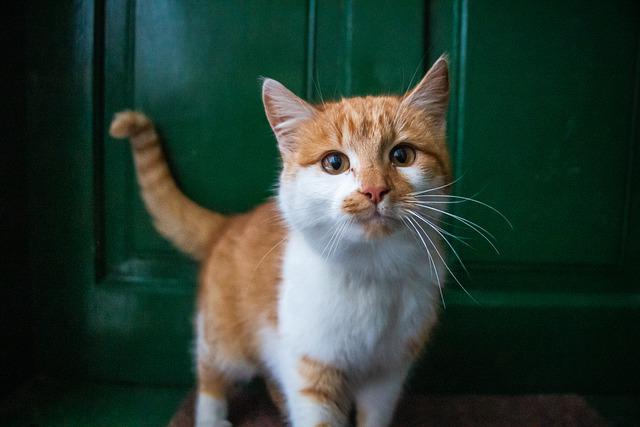Giardia In Cats- Causes, Symptoms & Treatment
23.08.2022.
Giardia is an intestinal parasite. Dog and cat stools can contain parasites, infecting other pets and even people. It is most common in animal shelters, kennels, feeding grounds, or pet parks.
What is giardiasis?
Giardia duodenalis is flagellated one-cell protozoan microscopic parasite which can cause diarrhea. Giardia colonizes the small intestine and infections occur worldwide. There are seven genotypes, A through G, with dogs most commonly infected by C and D, cats with F, and humans most commonly infected with A and B.
It has two forms:
- trophozoite - a feeding form that occurs in animals,
- cystic - which can be found in feces and contaminates the environment
How is giardia spread?
Giardiasis can be transmitted by eating or sniffing ground or water contaminated with cystic form. In a cat’s small intestine, cysts become feeding form, trophozoite. Trophozoite attaches to the intestinal wall feed, which is why cats develop clinical signs. Some of them transform into cystic form. The infectious cystic form can be found in stool.
Fecal contamination of the environment is the way of spreading giardiasis. From ingesting cysts to spreading in feces, it takes 5-16 days. It occurs densely in populated groups of cats, animal shelters, catteries, pet stores, and feeding grounds.

RELATED: Rabies in Cats - Symptoms, Diagnose & Prevention
Causes of giardia
Giardia cysts are primarily meant to transmit from cat to cat. Cysts are very resistant to the environment. They are resistant to freezing, heat, and chlorination of water. They can survive a couple of months in the environment if they are not exposed to direct sunlight or dried out. This makes giardia difficult to manage.
The main causes of giardia are:
- Shared litter boxes - Giardia cysts are spread in feces and contain the box from infected cats, so other cats can pick it up by sharing litter boxes
- Living with asymptomatic cats- not all infected cats become sick
- Crowded conditions
- Outdoor contamination-c ats with outdoor access may easily ingest giardia
Symptoms
Young kittens and adults with weak immune systems are most vulnerable. Since parasite attaches to the intestine wall and damages it, most of the symptoms include the gastrointestinal system:
- Diarrhea- foul-smelling, bloody, fatty, green, accompanied by mucous and flatulence; may be intermittent
- Vomiting- in fewer cases than diarrhea but can be present
- Lethargy- the cat is less active than usual, less grooming
- Dehydration- it occurs alongside vomiting and diarrhea or not drinking enough
- Weight loss- it came alongside a loss of appetite

RELATED: 6 Best Flea Shampoos For Cats On The Market
Diagnosing giardia in cats
Giardia cysts can be identified by microscope using a fecal smear, but it is necessary to have several different samples because cysts are shed sporadically. Another method is zinc sulfate flotation. The surest way of diagnosing is the ELISA test, which looks for the presence of antibodies in feces.
Treatment
Giardia is successfully treated with medications like metronidazole and fenbendazole, alone or in combination. These pills are very unpalatable and bitter, so it is not a rarity that cats spit the pill. You should have extra attention to that. It is corrected by intravenous fluids and other symptomatic therapy if there is vomiting and diarrhea.
Prognosis
The disease is not usually life-threatening but can be more severe in kittens, older cats, or cats with an immune system damaged by Feline Immunodeficiency Virus (FIV) or Feline Leukemia Virus (FeLV) infections or other serious illnesses. Many dogs and cats will be asymptomatic carriers, never developing any signs of disease. Younger animals are more likely to exhibit clinical signs.
Is this dangerous to my family?
Giardiasis can potentially transmit from cats to humans. Genotypes A and B can infect humans, but cats usually have genotype F. People with immunodeficiency should avoid handling litter or feces. It is very important to do environmental sanitation using chlorine bleach. Ammonium quaternary compounds are also reported as effective in killing giardia cysts.

RELATED: Cat Hairballs - What Are They & Can They Hurt Your Cat?
It is recommended to clean the anal region and paws of your cat with mild chlorhexidine shampoos, and after treatment, it is important to bathe the whole cat to clean the fur. If you are not wearing gloves, wash your hands thoroughly with soap and water after cleaning litter boxes and before handling food or touching your mouth.
Prevention
There is no drug to prevent giardia. Some countries have a registered vaccine, but its efficacy isn’t determined. The best prevention remains environmental control, sanitizing, and decontaminating potentially infected areas. On any sign that your cat’s health is changing, you should ask for help from your vet.
Conclusion
Giardiasis is the most common intestinal parasitic disease in dogs, cats, and humans. This parasite can cause gastrointestinal signs such as diarrhea. Pets are infected by ingesting (or sniffing) cysts found in the stools of infected animals. It is treated well by medications, and the prognosis is usually good. Giardia is also infectious to humans, so sanitizing and decontaminating the environment is recommended.
World Cat Finder Team







Share